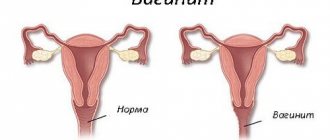Contraindications
hypersensitivity to pyrazolone derivatives (butadione, tribuzone);
bronchial asthma;
diseases accompanied by bronchospasm;
"aspirin asthma";
inhibition of hematopoiesis (agranulocytosis, neutropenia, leukopenia);
severe liver or kidney dysfunction;
blood diseases;
hereditary hemolytic anemia associated with deficiency of glucose-6-phosphate dehydrogenase;
pregnancy (especially in the first trimester and in the last 6 weeks);
lactation period.
With caution - infancy (up to 3 months).
Publications in the media
(Metamizofum natricum) INN
Synonyms. Analgin, Dipiron.
Composition and release form. Powder; Metamizole sodium tablets 0.5 g; 25% and 50% solutions in ampoules of 1 and 2 ml. Combined preparations of metamizole-sodium: pentalgin tablets (metamizole-sodium and amidopyrine 0.3 g, codeine 0.01 g, caffeine-sodium benzoate 0.05 g and phenobarbital 0.01 g); tempalgin tablets (0.5 g metamizole sodium and 0.02 g tempidine - 2,2,6,6-tetramethylpiperidone-4-paratoluenesulfonate, which has moderate tranquilizing activity); baralgin (maxigan, spazgan, spasmalgon, trigan) is a combination drug containing in one tablet 0.5 g of metamizole sodium, 0.005 g of 4-(piperidinoethoxy)-carbmethoxybenzophenone hydrochloride (an antispasmodic, acting like papaverine) and 0.0001 g 2,2-diphenyl-4-piperidylacetamide bromomethylate (ganglionic blocker); baralgin is also available in 5 ml ampoules containing 2.5 g of metamizole sodium and other ingredients in 0.01 and 0.0001 g, respectively, and in suppositories - 1.0, 0.01 and 0.0001 g, respectively .
Indications. Headache, arthralgia, neuralgia, radiculitis, myositis, febrile conditions, influenza, renal colic, rheumatism, chorea, toothache, hepatic and biliary colic, smooth muscle spasms.
Pharmachologic effect. Metamizole sodium belongs to the non-narcotic analgesics of the “analgesics-antipyretics” group. The drug has a pronounced analgesic, antipyretic and, to a lesser extent, anti-inflammatory effect. The analgesic effect is associated with the inhibitory effect of metamizole on the synthesis of PG in the central nervous system, namely, it inhibits the enzyme cyclooxygenase, reducing the formation of PG E 2 and PG F2a, which are involved in the development of the pain reaction. The analgesic effect is especially pronounced during inflammation. The peripheral nervous system is also involved in the implementation of the analgesic effect. Peripheral effects may also be due to inhibition of PG synthesis or inhibition of the synthesis or action of other substances that increase the sensitivity of nociceptive receptors to mechanical and chemical stimuli. The antipyretic effect of metamizole sodium is associated with a violation of the synthesis of PGs, especially PG E 1, in the thermoregulation center located in the hypothalamus. A decrease in temperature is accompanied by dilation of the peripheral blood vessels of the skin, sweating and increased heat transfer. The effect of lowering body temperature is observed only against the background of fever.
Pharmacokinetics. The drug is easily absorbed from the gastrointestinal tract into the blood, quickly creating a high concentration in the blood. T 1/2 is 12.7 hours. Total clearance 40.9 ml/min. Excreted by the kidneys.
Side effects. Allergic reactions; granulocytopenia, agranulocytosis. Contraindications. Increased sensitivity; deficiency of glucose-6-phosphate dehydrogenase; bronchiolospasm; hematopoietic disorders.
Adverse reactions when interacting with other drugs. With simultaneous use of metamizole sodium with cimetidine or chloramphenicol, or beta-blockers (anaprilin), the inactivation of metamizole sodium slows down and its side effects increase. Barbiturates, by inducing microsomal liver enzymes, when used together with metamizole sodium, weaken its therapeutic effect.
Information for the patient. Metamizole sodium is usually prescribed orally at 0.25-0.5 g 2-3 times a day 30-40 minutes before meals. In case of gastrointestinal discomfort, the drug should be washed down with milk or jelly. With long-term use of the drug, it is necessary to monitor the peripheral blood picture.
Side effects
Allergic reactions: skin rash, Quincke's edema; rarely - anaphylactic shock, toxic epidermal necrolysis (Lyell's syndrome), in rare cases - Stevens-Johnson syndrome.
With prolonged use, leukopenia, thrombocytopenia, and agranulocytosis may occur.
If you are prone to bronchospasm, it is possible to provoke an attack; decrease in blood pressure.
Possible renal dysfunction, oliguria, anuria, proteinuria, interstitial nephritis, red staining of urine due to the release of a metabolite.
About all side (unusual) effects, incl. not listed above, you should inform your doctor and stop taking the drug.
Metamizole sodium (Dipirone, Analgin) - a pyrazolone derivative with analgesic, antipyretic and anti-inflammatory effects, appeared on the pharmaceutical market in 1921 and was widely used throughout the world as an over-the-counter drug. In the 60s Information has begun to emerge that, like other pyrazolones, metamizole can cause serious adverse reactions, including deaths, primarily due to damage to the hematopoietic system. Agranulocytosis, which develops in some patients with oral and intravenous administration of metamizole sodium, caused its withdrawal from the pharmaceutical market in many countries, but in others it continues to be widely used, incl. and as an over-the-counter product [1].
The drug's manufacturers, the German pharmaceutical companies Hoechst and Boehringer-Mannheim, insisted on the safety of metamizole and argued that myelotoxic reactions with its use are extremely rare. In order to determine the frequency of agranulocytosis, the companies organized a large international epidemiological study - the International Agranulocytosis and Aplastic Anaemia Study (IAAAS) [2]. According to his data, the frequency of agranulocytosis associated with the use of metamizole was approximately 1:1000000. However, the results of the IAAAS study, released in 1986, have been questioned in many publications due to errors in data collection and inadequate supervision. In addition, the calculation of the frequency of the myelosuppressive effect was carried out incorrectly. When calculating, the indicator “one week of use” was used instead of the indicator “number of cases per year” [3]. If we recalculate the results using the last indicator, then 1 case of agranulocytosis occurs per 20 thousand cases of drug use per year, i.e. the complication rate is 1:20,000 [3].
In Germany, according to the IAAAS study, in 1985, about 100 cases of agranulocytosis associated with the use of metamizole were registered. During this period, the drug was prescribed to approximately 3 million patients who received approximately 10 million packages. According to calculations, there was 1 case of agranulocytosis per 30 thousand patients using the drug [4]. These data became the basis for the introduction of regulatory measures. In 1986, the over-the-counter sale of metamizole sodium was banned in Germany, and its use was limited to the following indications [4]:
- acute severe pain due to injury or surgery;
- colic pain;
- pain due to malignant neoplasms or other severe pain, chronic pain in the absence of effect or the presence of contraindications to other therapeutic agents;
- high temperature that cannot be reduced by other means.
Subsequently, all combination drugs containing metamizole sodium were banned in Germany. The reason for the ban was the concern that when prescribing a combination, doctors do not always take into account the risk of complications associated with the individual ingredients included in its composition. In addition, the results of clinical studies have shown that combinations of metamizole sodium with pitofenone and other antispasmodics do not have any advantages compared to metamizole alone.
However, the trade names of combination drugs were so popular that German manufacturers of combinations, having removed the antispasmodic from their composition, retained the popular names of combinations for monocomponent drugs. Moreover, in the instructions of the Hoechst company in the description of the pharmacological properties of monocomponent Baralgan M and Baralgin M, an indication of the antispasmodic effect, which metamizole does not possess, remains. Such information came from India in 1998 at the Internet conference “E-Drugs”. Unfortunately, some popular Russian drug reference books also published it in the same year.
The use of metamizole has been severely restricted or banned in many countries. In particular, in the WHO document “Consolidated list of products whose consumption and/or sale have been banned, withdrawn” , severely restricted or not approved by Governments" 1987) published information that metamizole sodium is prohibited or limited for use in Australia, Norway, the Philippines, the USA, Italy, Denmark, Saudi Arabia, Bangladesh, Germany, Egypt, Israel, Greece, Mexico, Peru, Singapore, Sweden and Venezuela.
The first country to ban the import of metamizole was Australia (1965). In a discussion initiated at the request of the Moldovan drug information center DrugInfo at the E-Drugs conference in 2002, the representative of Australia expressed the opinion that currently few Australian doctors know about the existence of such a drug as metamizole sodium.
In Norway, the use of metamizole was banned in 1976. In 1977, its prescription use was banned in the Philippines. Use (only under close medical supervision) is limited to cases of serious and life-threatening situations when other antipyretic drugs are ineffective. The instructions for use include a warning about the risk of developing fatal agranulocytosis.
That same year, the US Food and Drug Administration (FDA) did not approve the drug, despite its high effectiveness as an analgesic and antipyretic. This decision was due to the fact that fatal agranulocytosis cannot be predicted and prevented even with frequent monitoring of the blood picture, since it can develop within several hours after taking the drug. The FDA has concluded that the potential risks of metamizole significantly outweigh its benefits.
In Kuwait, in 1978, all dosage forms of metamizole were banned, except injectable forms, which can be used in emergency situations. In 1979, injectable drugs containing more than 1 gram of metamizole and its combination drugs for intravenous administration were withdrawn from the market in Italy, and in Denmark all metamizole-containing drugs for systemic use were banned. In 1980, a similar decision was made by Saudi Arabia. However, in the latter case, the reason for the ban was not agranulocytosis, but reports of the development of anaphylactic shock in patients. The possible risk of anaphylactic shock also served as the basis for prohibiting the registration of drugs containing more than 1 g of metamizole in Egypt (1983).
This side effect of metamizole has received much less attention than the inhibitory effect on the bone marrow. However, the results of monitoring adverse reactions in German hospitals indicate that vascular shock caused by metamizole is observed 10 times more often than agranulocytosis [4]. The mortality rate is 30-50%. It is important to note that due to the destruction of vascular endothelial cells caused by their hypersensitivity to metamizole, blood pressure cannot be raised either with the help of blood substitutes or vasoconstrictors. In Germany, one of the reasons for the ban on injectable combination drugs metamizole was the death from anaphylactic shock of the chairman of the Medicines Committee of the German Medical Association, caused by one of them.
Metamizole can cause other side effects associated with immune disorders: hepatitis, alveolitis, interstitial nephritis, pneumonia and serious skin reactions - Lyell's syndrome (toxic epidermal necrolysis) and Stevens-Johnson (erythema malignant exudative erythema) [5]. The authoritative international drug guide MARTINDALE, The Extra Pharmacopoeia (Thirtieth Ed., 1993) states that due to the risk of serious adverse reactions, the use of metamizole is justified only in life-threatening situations when there is no alternative. In many countries where the use of metamizole is limited, it is used for this purpose, for example, to relieve pain in patients with terminal conditions or to treat hyperpyrexia (Table).
In recent years, the list of states in which the use of metamizole sodium is limited or prohibited has been constantly expanding. Regulatory measures have been introduced for metamizole in approximately 40 countries. There are countries where it has never been registered, such as the UK. Among Western European countries, metamizole is relatively widely represented on the pharmaceutical market in France: in the form of a monocomponent drug it is registered under 2 trade names, in the form of combinations - under 5 (of which 2 are combinations with caffeine, 2 with antispasmodics and 1 with codeine). However, in most countries of Western Europe, both monocomponent and combined preparations of metamizole are prohibited.
The world already has experience of “double” prohibition of the drug. Metamizole was present on the Swedish pharmaceutical market from 1934 to 1974. In 1974, on the recommendation of the Medicines Agency, it was voluntarily withdrawn from the market by manufacturers due to side effects and, above all, the risk of agranulocytosis. The incidence of agranulocytosis is estimated to be 1:3000 in Sweden [6].
However, in 1995, taking into account the results of the large epidemiological study mentioned above, the country's regulatory authorities concluded that metamizole is effective, cheap and fairly safe. This was the basis for its re-authorization, subject to careful monitoring of adverse reactions. Metamizole has been approved for the limited indications of short-term control of acute, moderate to severe pain resulting from tissue damage, such as surgery or urinary and biliary colic.
After re-authorization, the Swedish Medicines Agency received 7 reports of agranulocytosis with the use of metamizole, of which in 6 cases the drug was taken orally. According to the Agency's conclusion, the frequency of agranulocytosis was 1:1700, which was significantly higher than expected. In 1999, based on the results of monitoring of adverse reactions, metamizole was again withdrawn from the Swedish pharmaceutical market.
Currently, the Swedish Medicines Agency has published complete data [7], which suggests that agranulocytosis associated with metamizole is even more common - 1: 1439. In total, 52 cases of serious blood damage under the influence of metamizole were registered in the country, 15 of which were fatal Exodus. Agranulocytosis was observed in 43 cases (10 deaths). These data are very close to those obtained in the 50s. regarding aminopyrine.
As follows from the table, metamizole sodium is prohibited not only in Western European countries, North America and Australia. Its use is not approved in many developing countries in Asia, Africa and South America. In general (with different formulations), all drugs and dosage forms of metamizole are prohibited or not approved for use in 19 countries. The only region where metamizole continues to be widely used is Eastern Europe, including the republics of the former Soviet Union and countries that were part of the socialist camp. The exception is the former Czechoslovakia, where the use of all drugs containing metamizole was brought under control back in 1992.
In Mongolia, in addition to commercial preparations of metamizole (Analgin), large packages of it are hand-packed in pharmacies and sold without a prescription. In Croatia, according to B. Vrhovac, theoretically metamizole is a prescription drug, but in practice it can be freely purchased at any pharmacy. An analysis of the medical records of patients who were in one of the hematology departments of a Croatian clinic with a diagnosis of agranulocytosis showed that 25% of patients took metamizole.
In Bulgaria, metamizole (Analgin) is one of the most frequently prescribed drugs, partly due to the fact that the country is one of its main producers. A similar situation has developed in Russia and the republics of the former Soviet Union. The widespread use of metamizole in these countries appears to be based on three interrelated factors: 1) the traditional Eastern European prejudice against opioid analgesics (this problem was encountered during the Bosnian war); 2) historically shaped preferences of physicians and drug consumers; and 3) the strong influence of metamizole manufacturers in this geographic region.
Metamizole is often supplied to former socialist countries as humanitarian aid. Donors say it is an alternative to opioid analgesics, which cannot be donated as humanitarian aid.
In recent years, some positive changes have been observed in the CIS countries and the Baltic republics. Thus, in Armenia, since 2000, registration of tablets and injection solutions of metamizole has been stopped [8]. The latter were replaced with soluble aspirin. However, previously registered metamizole (Analgin) will remain on the market until the expiration of the registration period. Combination drugs containing metamizole are still being registered.
In Lithuania, in September 2000, the State Medicines Control Agency refused, for safety reasons, the re-registration of combination drugs containing metamizole sodium, fenpiverine bromide and pitofenone hydrochloride [9].
In Moldova, the DrugInfo information center is actively fighting for the withdrawal of metamizole, making extensive use of the capabilities of its bulletin [4].
The safety issues of analgin were repeatedly raised by A.V. Astakhova on the pages of the Russian bulletin “Drug Safety” and in other periodicals. As international experience shows, awareness of doctors and drug consumers about serious adverse reactions of metamizole can lead to a significant reduction in the volume of its consumption.
Thus, a retrospective analysis of outpatient charts conducted in one of the medical institutions in Cameroon showed that in 1992, Dipirone (metamizole) was contained in 48% of prescriptions. At the end of 1992, an independent bulletin (Precriber's bulletin) published a large review of Dipirone. This newsletter number was sent to all doctors, nurses, midwives and pharmacists. As a result, in 1993, the number of Dipirone prescriptions in the same medical institution decreased to 9% [10]. Consideration of metamizole, in particular, combination drugs containing it, is in the plans of the Russian Pharmacological Committee. In particular, the Committee decided to prohibit the over-the-counter release of Analgin for use by people under 15 years of age. However, along with regulatory measures, a lot of educational work should be carried out in this direction, since, as mentioned above, there are powerful factors that counteract the introduction of restrictions on the use of analgin in Russia. The latest attempts to keep metamizole on the Eastern European market include the theory of ethnic differences in reactions to the drug.
Interaction
The simultaneous use of Analgin with other non-narcotic analgesics can lead to mutual enhancement of toxic effects.
Tricyclic antidepressants, oral contraceptives and allopurinol interfere with the metabolism of metamizole in the liver and increase its toxicity.
Barbiturates and phenylbutazone weaken the effect of analgin.
Analgin enhances the effects of alcohol-containing drinks.
Radiocontrast agents, colloidal blood substitutes and penicillin should not be used during treatment with metamizole.
Metamizole, displacing oral hypoglycemic drugs, indirect anticoagulants, corticosteroids and indomethacin from protein binding, increases their activity.
The simultaneous use of Analgin with cyclosporine reduces the level of the latter in the blood. Thiamazole and sarcolysine increase the risk of developing leukopenia. The effect is enhanced by codeine and propranolol (slows down inactivation).
Sedatives and tranquilizers enhance the analgesic effect of analgin.
What we are treated with: Analgin. To numb the pain or defeat the disease
A scientific review of a popular painkiller
Why is one of the most accessible and well-known painkillers in our country dangerous, what types of pain is it effective against, how medical researchers fight for the lives of patients with pharmaceutical companies and with each other, why Sweden first banned Analgin, then allowed it, and then - she banned it again, read the material from Indicator.Ru from the section “How they treat us.”
Medicines designed to combat pain, fever and inflammation are among the most sought after on the pharmaceutical market. They are in any medicine cabinet and are often sold without a prescription in Russia, but in reality, many of them can seriously threaten health, especially if you do not first weigh all the pros and cons of such treatment and do not take into account risk factors.
The hero of today’s issue of the “How We Are Treated” column is the familiar Analgin - a cheap and accessible pain reliever and antipyretic. You may be surprised, but it is prohibited for sale in Western Europe and the USA, as well as several other countries.
From what, from what
The active ingredient in Analgin is called metamizole. It was first synthesized in 1920 by Ludwig Knorr, who is also known for discovering and studying several non-steroidal anti-inflammatory drugs, such as antipyrine; He was also interested in the properties of morphine and codeine. At the beginning of the 20th century, there were not as many rules and complex approval procedures for the drug as there are now, so the drug began to be produced just two years after its discovery. In the West, a drug based on metamizole is called Dipirone.
Metamizole molecule. Sulfur atoms are indicated in yellow, carbon in gray, oxygen in red, nitrogen in blue, and hydrogen in white.
Scientists have not fully established the exact mechanism of operation of this molecule, but metamizole presumably blocks the synthesis of prostaglandins in the brain and spinal cord. We have already told the heartbreaking story that the causes of pain and inflammation lie precisely in their incorrect behavior after meeting with the cyclooxygenase sisters in the article about Nurofen. However, Metamizole is not as hardworking as our previous heroes: he does not go to suppress the uprising of dissatisfied prostaglandins personally, but sends his derivatives. It was also not found to be associated with type 1 cannabinoid receptors located in the cells of the central system, which substances from hemp, as well as paracetamol, are blamed for. Although it most likely has some influence on this system. Other authors, on the contrary, argue that, although Analgin himself did not work there, his subordinate metabolites could well act on type 1 cannabinoid receptors at his “guidance.”
The Cochrane Collaboration reviewed our review, which looked at moderate to high quality studies assessing the ability of metamizole to help with post-operative acute pain. Despite the confusion, the review confirms that this drug really works.
The Cochrane Library is a database of the Cochrane Collaboration, an international non-profit organization involved in the development of guidelines from the World Health Organization. The organization's name comes from its founder, the 20th-century Scottish medical scientist Archibald Cochrane, who championed the need for evidence-based medicine and good clinical trials and wrote the book Efficiency and Effectiveness: Random Reflections on Health Care. Medical scientists and pharmacists consider the Cochrane Database to be one of the most authoritative sources of such information: the publications included in it have been selected according to the standards of evidence-based medicine and report the results of randomized, double-blind, placebo-controlled clinical trials.
Compared to placebo, which helped only 30% of patients, a single dose of metamizole 500 mg improved the condition of 70% of study participants. True, the authors still had doubts about comparing the active substance Analgin with other painkillers: the results were too ambiguous, and the patient samples were small.
The effect of Dipiron (Analgin) against acute attacks of pain (for example, after the removal of a wisdom tooth) and in renal colic has also been proven. In the latter case, scientists also proved that intravenous injections help better than intramuscular ones.
Side effects
Analgin can be dangerous in a completely different way: our granulocytes, one of the types of leukocytes, do not like it. Associated with them is a side effect of long-term use of the drug - agranulocytosis, that is, a drop in the level of granulocytes to 5% or even lower.
Granulocytes are granular leukocytes, white blood cells, which are characterized by a clearly visible nucleus and large granules inside. In every cubic millimeter of our blood you can find about 2-6 thousand of these cells. Their goal is to fight infections, or immune protection of the borders of our body. Agranulocytosis may be associated with the effect of Analgin on type 2 cannabinoid receptors.
There is scientific evidence to support this idea. Scientists from Germany, the USA and Italy prove that substances resulting from the breakdown of metamizole are able to bind both cannabinoid receptors. They also prove that these substances react with type 1 and type 2 cyclooxygenases both in vitro and in living tissue.
When the ranks of immune defenders are so thinned out, the body becomes vulnerable to many bacterial and fungal infections. Stomatitis, ulcers of the mucous membranes, fever, pain in the throat and joints are the first unpleasant manifestations of this condition. It can cause swelling of the larynx and even suffocation. This set of clinical signs can confuse the doctor, so it is not always possible to correctly determine the cause of these manifestations.
In case of complications, an atypical form of pneumonia occurs, which is difficult to diagnose due to the absence of cough and sputum, necrotic enteropathy (damage to the intestinal walls, pain and bloating in the abdomen, loose stools), which can lead to the death of the patient if bacteria from his intestines enter the blood . Also, with severe agranulocytosis, toxic hepatitis can develop - severe damage to liver tissue.
However, scientists continue to argue about how often taking Analgin leads to this disease.
The first articles about the dangers of Analgin began to be published back in the late 1960s, and one of them caused a stir among foreign doctors: according to this article, 0.79% of patients taking Dipiron also received agranulocytosis, and a third of patients with agranulocytosis died.
After this, Analgin-Dipirone was banned in the UK. The UK's example was followed by other countries where metamizole-based drugs disappeared from pharmacies in the seventies. At the same time, in Eastern Europe and Latin America, the same drugs were easily and freely sold, considering them to be safe analgesics. Therefore, the Europeans did not calm down and continued to look for evidence that would confirm the involvement of metamizole in the occurrence of agranulocytosis or justify the drug.
An international study was conducted, involving representatives from seven European cities and Jerusalem, but a large-scale search that lasted six years led to a rather modest figure: 1 case in 1.1 million patients per week. It looks like an excellent alibi, if you do not take into account that it included only patients in the hospital, and the controls were patients with agranulocytosis, from whom they were asked whether they drank metamizole. That being said, the case—the metric the scientists used—is quite unusual. If you recalculate the same data for a year, the figure will be completely different - 20,000.
Colleagues from Latin America saw a lot of bias in these studies: in their opinion, the risk estimates for using the drug were greatly overestimated. Thus, doctors from Sao Paulo did not find any particular dangers in the use of this medicine and stated that it, of course, increases the risk of developing agranulocytosis, but so weakly that this can be neglected without leaving people without an accessible medicine.
They also conducted another study, including Mexico and Argentina, but the results were the same. However, the author of the Russian review, Maria Avksentyeva, notes that this study was funded by a corporation that absorbed the producers of metamizole. In both studies, the risk of agranulocytosis was about half a person per million per year.
The Swedes also banned the drug. After a large-scale European project, they returned it to pharmacies again, but not just like that, but for the purpose of study. The indications became narrower: only for short-term use for renal and hepatic colic and acute pain after operations, and then doctors began to record side effects. Then the results convinced Swedish doctors that there was a danger, and in 1999 the drug was banned again.
The Dutch studied the effect of medications on agranulocytosis for 20 years, and they also considered metamizole dangerous for use. Library+will+be+unavailable+on+Saturday+01st+July+from+03.00-09.00+EDT+and+on+Sunday+2nd+July+03.00-06.00+EDT+for+essential+maintenance.++Apologies+ for+the+inconvenience), although in a small number of cases.
In a review from Barcelona doctors, metamizole took fourth place in the list of drugs that increase the risk of agranulocytosis, and for some reason no one is going to ban the winners from this “podium.” Leading the list, by the way, was methimazole, used to correct an overactive thyroid gland (that’s how important it is not to confuse the names).
In recent years, several more articles have appeared on this topic. The authors of another systematic review, examining 22 articles on the side effects of metamizole, also confirmed that the risk of agranulocytosis is increased, although its level varies greatly from one study to another. In another large study of a single dose of metamizole for post-operative pain, researchers assessed the drug's side effects in a group of 1,177 children under six years of age. The drug was administered once and intravenously, and no signs of agranulocytosis were found in patients. The same data for adults is confirmed by a review that assessed data from 79 studies.
Taking into account 77 reports from Switzerland and 1,417 international ones, the World Health Organization also summed up its conclusion: according to the conclusions of its experts, the risk is 0.46-1.63 per million person-days of use.
Thus, most of the results boil down to the fact that you should not use drugs based on metamizole for a long time, although, according to some data, a single dose may be relatively safe. Be that as it may, immigrants from Latin America to the United States continue to take metamizole illegally, swearing at local legislation, and some scientists suggest that the drug has a stronger effect on haplogroups common in Europe, so Latin Americans and Asians get much less.
Indicator.Ru recommends: can be used, but not for a long time
Scientific research data indicates the relative danger of the drug with long-term use, although not all scientists agree with this point of view. At the same time, in many developed countries the drug is either withdrawn from circulation or sold strictly according to a prescription, but in others it is freely sold, as in Russia. What to do? To be on the safe side, it is still better to heed the warnings and if you take Analgin, then do it for acute attacks of pain, but not for protracted, chronic pain. You can also make a choice in its favor if other painkillers do not help or are not suitable, but also do not get carried away with this drug and do not take it for more than a few days in a row.
Chronic use of analgesics can be dangerous: some, like many non-steroidal anti-inflammatory drugs, increase the risk of heart attack and gastrointestinal bleeding, others, like Analgin, can critically reduce the level of immune cells, a type of white blood cell, in the blood. And if this happens, you will become defenseless against a number of serious diseases, which can lead to pneumonia, hepatitis, and death at the end of this epic.
But always remember that numbing the pain does not mean defeating the disease itself. Therefore, it is better to try to find out the cause of the problem and eliminate it, if the pain does not go away after a couple of days, than to drink analgesics for weeks, turning a blind eye to a possible threat to your health not only from them, but also from the fact that while “treating” the symptoms you forget about the disease itself.
And if you still drink Analgin, listen carefully to your health: even severe stomatitis and an increase in temperature can be an alarming sign, after which it is better to go to the doctor and ask for a referral for a blood test so that these same leukocytes can be counted for you.
This article was published in the magazine “Idikator” on June 29, 2017.
Author: Ekaterina Mishchenko
Directions for use and doses
Inside, adults - 1 tablet. 2-3 times a day after meals. The maximum single dose is 1 g (2 tablets), daily dose is 3 g (6 tablets). With long-term (more than a week) use of the drug, monitoring of the peripheral blood picture and the functional state of the liver is necessary.
Children are prescribed 5–10 mg/kg body weight 3–4 times a day for no more than 3 days (after crushing the tablet).
Do not use (without consulting a doctor) for more than 3 days when prescribed as an antipyretic and for more than 5 days when prescribed as an analgesic.
Analgin 500 mg No. 10 tablet.
APPROVED by the Order of the Chairman of the Committee for Control of Medical and Pharmaceutical Activities of the Ministry of Health and Social Development of the Republic of Kazakhstan dated "____" __________ 20___ No. ______ Instructions for the medical use of the drug ANALGIN Trade name Analgin International nonproprietary name Metamizole sodium Dosage form Tablets 500 mg Composition One tablet contains: active substance - metamizole sodium 500.0 mg, excipients: sucrose, talc, potato starch, calcium stearate. Description Tablets are white or white with a slightly yellowish tint, flat-cylindrical in shape with a chamfer and a score. Pharmacotherapeutic group: Other analgesics-antipyretics. Pyrazolones. Metamizole sodium ATC code N02BB02 Pharmacological properties Pharmacokinetics When taken orally, it is quickly and completely absorbed. There is no unchanged metamizole in the blood. Excreted by the kidneys in the form of metabolites. Metabolites are excreted in breast milk. The action develops after 20-40 minutes and reaches a maximum after 2 hours. The maximum concentration is achieved 1-1.5 hours after parenteral administration. The half-life is approximately 7 hours. Metabolites are completely excreted in the urine, 71% of the administered dose is detected in the interval from 0 to 24 hours, 18% - from 24 to 48 hours. Pharmacodynamics Analgin has analgesic, antipyretic and weak anti-inflammatory effects. It is a derivative of pyrazolone. The mechanism of action is associated with inhibition of the activity of cyclooxygenase types I and II. As a result, the reactions of the arachidonic cascade of eicosanoid synthesis are blocked and the formation of prostaglandins PgE2, PgF2α, their endoperoxides, and bradykinin is disrupted. In the nuclei of the antinociceptive system, analgin enhances the release of kynurenic acid, which inhibits the conduction of pain impulses (due to its effect on NMDA receptors). It prevents the transmission of pain impulses from extra- and proprioceptive receptors along the Gaulle and Burdach bundles, and increases the threshold of excitability of the pain centers of the thalamus. At the same time, it enhances heat transfer and reduces the activity of the temperature-setting center of the hypothalamus. Indications for use: pain, mild or moderate (headache, toothache, neuralgia, myalgia, dysmenorrhea, postoperative pain) - febrile conditions in infectious and inflammatory diseases. Method of administration and dosage: 1 tablet 2-3 times a day after meals. The maximum single dose is 1 g, the daily dose is 3 g. Adults and children over 15 years of age are prescribed 250-500 mg (½-1 tablet) 2-3 times a day. The duration of administration is no more than 5 days when prescribed as an analgesic and no more than 3 days when prescribed as an antipyretic. Side effects Rarely - nausea, vomiting, anorexia, pain in the epigastric region, flatulence, constipation, diarrhea - headache, dizziness, agitation, irritability - allergic reactions (skin rash, itching, angioedema), exudative erythema multiforme (Stevens-Johnson syndrome ), toxic epidermal necrolysis (Lyell's syndrome), bronchospastic syndrome, anaphylactic shock - paresthesia, tinnitus, blurred vision, tremor, depression - agranulocytosis, leukopenia, anemia, thrombocytopenia (with long-term use) - arterial hypotension, heart rhythm disturbances - oliguria , anuria, proteinuria, renal dysfunction, interstitial nephritis Contraindications - hypersensitivity to analgin, other pyrazolone derivatives (phenylbutazone, tribuzone) or other excipients of the drug - deficiency of glucose-6-phosphate dehydrogenase - liver and/or renal failure - inhibition of hematopoiesis (agranulocytosis , cytotoxic or infectious neutropenia), anemia, leukopenia - peptic ulcer of the stomach and duodenum, gastrointestinal bleeding - attacks of bronchial asthma, urticaria, history of acute rhinitis associated with the use of acetylsalicylic acid or other non-steroidal anti-inflammatory drugs - children under 15 years of age - pregnancy and lactation. Drug interactions When used simultaneously with other analgesics, antipyretics and non-steroidal anti-inflammatory drugs, mutual enhancement of toxic effects is possible. The effect of Analgin is enhanced when used together with barbiturates, codeine, H2-blockers of histamine receptors, anaprilin (due to slower inactivation of the drug). Increases the risk of developing leukopenia when used together with thiamazole and cytostatic agents. Analgin displaces oral hypoglycemic agents from binding to plasma proteins and, thereby, increases their effect. Enhances the activity of indirect anticoagulants, glucocorticosteroids and indomethacin due to their displacement from connection with blood plasma proteins. Analgin enhances the sedative effect of ethyl alcohol. Analgin reduces the concentration of cyclosporine A in the blood plasma. When used simultaneously with phenothiazine derivatives, severe hyperthermia may develop. Tricyclic antidepressants, combined oral contraceptives and allopurinol slow down the metabolism of Analgin and increase its toxicity, sedatives and anxiolytics enhance the analgesic effect of Analgin. When used simultaneously with myotropic antispasmodics (drotaverine, papaverine, pitofenone) and m-anticholinergic blockers (fenpiverinium bromide, platyphylline, atropine), a mutual enhancement of the analgesic, antispasmodic and antipyretic activity of this combination is observed. Caffeine enhances the effect of the drug. When used simultaneously with inducers of microsomal liver enzymes, the effectiveness of Analgin may decrease. Special instructions Long-term use of Analgin If regular use of Analgin is necessary for more than 5 days, the peripheral blood picture should be monitored weekly. Acute abdominal pain The use of Analgin to relieve acute abdominal pain is not recommended until its cause is determined. Use in persons with pathology of the cardiovascular system Careful monitoring of hemodynamics is necessary, especially in patients with systolic pressure levels below 100 mmHg. Art. or with circulatory instability (for example, with myocardial infarction, multiple trauma, incipient shock), with a history of kidney disease (pyelonephritis, glomerulonephritis), as well as in persons with alcohol dependence. Agranulocytosis In the event of an unexpected deterioration in the patient’s general condition during treatment with Analgin, manifested by an increase in temperature, inflammation of the mucous membranes of the oral cavity and pharynx (necrotizing stomatitis, purulent-necrotic tonsillitis), nose (sinusitis), increased ESR, the drug should be stopped immediately, i.e. To. these symptoms may be associated with the development of agranulocytosis. Excretion of Analgin biotransformation products in the urine can cause red coloration of urine, which has no clinical significance and disappears after discontinuation of the drug. Use in pediatrics The use of Analgin in children under 15 years of age is not recommended. Features of the effect of the drug on the ability to drive a vehicle or potentially dangerous mechanisms Taking Analgin does not affect the ability to drive vehicles or potentially dangerous mechanisms, but caution should be exercised with its long-term use. Overdose Symptoms: nausea, vomiting, stomach pain, hypothermia, decreased blood pressure, tachycardia, shortness of breath, tinnitus, drowsiness, impaired consciousness, delirium, acute liver and/or renal failure, convulsions, respiratory muscle paralysis, agranulocytosis. Treatment: discontinuation of the drug, gastric lavage, taking saline laxatives and activated charcoal to prevent absorption of the drug in the stomach and intestines, symptomatic therapy aimed at maintaining vital functions. Carrying out forced diuresis and administering sodium bicarbonate to alkalize urine accelerates the elimination of the drug. There is no specific antidote for metamizole sodium. The main metabolite of metamizole (4-methylaminoantipyrine) can be removed using hemodialysis, hemofiltration, hemoperfusion and plasmapheresis. With the development of convulsive syndrome, intravenous administration of diazepam and fast-acting barbiturates. Release form and packaging Tablets 500 mg. 10 tablets in a blister pack made of polyvinyl chloride film and printed varnished aluminum foil. 10 tablets in a contoured cell-free packaging made of polyethylene-coated paper. Outline packages with an equal number of instructions for medical use in the state and Russian languages are placed in a group cardboard box. Storage conditions Store in a dry place, protected from light, at a temperature not exceeding 25º C. Keep out of the reach of children! Shelf life: 5 years Do not use after expiration date. Conditions for dispensing from pharmacies Without a prescription 623856, Russia, Sverdlovsk region, Irbit, st. Kirova, 172 Tel/fax (34355) 3-60-90 Owner of the registration certificate OJSC Irbitsky Chemical-Pharmaceutical Plant Address of the organization that accepts claims from consumers on the quality of products in the territory of the Republic of Kazakhstan Irbitsky Chemical-Pharmaceutical Plant OJSC 623856, Russia , Sverdlovsk region, Irbit, st. Kirova, 172 Tel/fax (34355) 3-60-90 Email address
Overdose
Symptoms: with long-term use of the drug (more than 7 days) in large doses - nausea, vomiting, gastralgia, oliguria, hypothermia, decreased blood pressure, tachycardia, shortness of breath, tinnitus, drowsiness, delirium, disturbances of consciousness, agranulocytosis, hemorrhagic syndrome, acute renal and/or liver failure, convulsions, paralysis of the respiratory muscles.
Treatment: induce vomiting, perform gastric lavage, take saline laxatives, activated charcoal. In a medical institution - forced diuresis, hemodialysis, with the development of convulsive syndrome - intravenous administration of diazepam and barbiturates.
Content
- Characteristics of analgin (tab. No. 20)
- Where to buy Falkenstein?
Composition: 1 tablet contains: metamizole sodium 500 mg Pharmacological action: Analgesic-antipyretic.
It is a derivative of pyrazolone.
It has an analgesic, antipyretic and anti-inflammatory effect, the mechanism of which is associated with inhibition of prostaglandin synthesis.
Indications for Use: Pain syndrome of various origins (renal and biliary colic, neuralgia, myalgia; for injuries, burns, after operations; headache, toothache, menalgia).
Fever in infectious and inflammatory diseases.
Method of Administration: Orally or rectally, adults are prescribed 250-500 mg 2-3 times a day.
The maximum single dose is 1 g, daily dose is 3 g.
Single doses for children aged 2-3 years are 50-100 mg; 4-5 years - 100-200 mg; 6-7 years - 200 mg; 8-14 years - 250-300 mg; Frequency of administration: 2-3 times/day.
IM or IV slowly for adults - 250-500 mg 2-3 times a day.
The maximum single dose is 1 g, daily dose is 2 g.
In children, it is used parenterally at a dose of 50-100 mg per 10 kg of body weight.
Interaction: When used simultaneously with analgesics, antipyretics, and NSAIDs, mutual enhancement of toxic effects is possible.
When used simultaneously with inducers of microsomal liver enzymes, the effectiveness of metamizole sodium may decrease.
With simultaneous use, the activity of indirect anticoagulants, oral hypoglycemic drugs, corticosteroids, and indomethacin increases due to their displacement from connection with blood proteins under the influence of metamizole sodium.
When used simultaneously with phenothiazine derivatives, severe hyperthermia is possible; with sedatives, anxiolytics - the analgesic effect of metamizole sodium is enhanced; with tricyclic antidepressants, oral contraceptives, allopurinol - the metabolism of metamizole sodium is disrupted and its toxicity increases; with caffeine - the effect of metamizole sodium is enhanced; with cyclosporine - the concentration of cyclosporine in the blood plasma decreases.
When metamizole sodium is used in combination with pitofenone hydrochloride (has a direct myotropic effect on the smooth muscles of internal organs and causes its relaxation) and with fenpiverinium bromide (m-anticholinergic), their pharmacological action is mutually enhanced, which is accompanied by a decrease in pain, relaxation of smooth muscles and reduction of elevated body temperature.
Side Effects: Allergic reactions: - skin rash, Quincke's edema; - rarely - anaphylactic shock.
From the hematopoietic system: - rarely, with long-term use - leukopenia, agranulocytosis.
Local reactions: with intramuscular injection - infiltrates at the injection site.
Contraindications: Severe renal and/or liver dysfunction, glucose-6-phosphate dehydrogenase deficiency, blood diseases, hypersensitivity to pyrazolone derivatives.
Use during pregnancy and lactation: Use with caution during pregnancy, especially in the first trimester and in the last 6 weeks.
Overdose: Symptoms of an overdose of Analgin manifest themselves in the form of: - severe hypotension; - hypothermia; - shortness of breath; - palpitations; - nausea; - tinnitus; - weakness; - vomiting; - impaired consciousness; - delirium; - drowsiness; - convulsive syndrome.
The possibility of developing hemorrhagic syndrome, acute agranulocytosis, liver and acute renal failure cannot be excluded.
The lethal dose in tablets is from 15 to 20 grams.
Treatment: gastric lavage (the procedure is carried out using a tube), induction of vomiting, use of saline laxatives and enterosorbents, alkalization of urine, forced diuresis.
Subsequently, therapy is symptomatic, aimed at regulating and maintaining the impaired functions of vital organs.
Special Instructions: With long-term use, it is necessary to monitor the peripheral blood picture.
Metamizole sodium is used in combination with pitofenone and fenpiverinium bromide as an analgesic with an antispasmodic effect.
Use with caution in children in the first 3 months of life.
special instructions
Patients suffering from bronchial asthma and hay fever may develop hypersensitivity reactions.
With long-term use (more than 7 days), it is necessary to monitor the peripheral blood picture.
Do not use to relieve acute abdominal pain (until the causes are clarified).
When treating children under 5 years of age and patients receiving cytotoxic drugs, metamizole sodium should only be taken under medical supervision.
Particular caution is required when prescribing to patients who abuse alcoholic beverages.
Children under 2 years of age are recommended to use pediatric dosage forms.
For children and adolescents under 18 years of age, use only as prescribed by a doctor.
Instructions for use ANALGIN
When using the drug, agranulocytosis may develop, and therefore, if an unmotivated increase in temperature, chills, sore throat, difficulty swallowing, stomatitis, as well as inflammation of the external genitalia and anus are detected, immediate discontinuation of the drug is necessary.
The risk of potentially severe anaphylactoid reactions to Analgin increases significantly in patients with:
- asthma syndrome or angioedema to non-narcotic analgesics;
- bronchial asthma with concomitant rhinosinusitis and nasal polyps, chronic urticaria,
- intolerance to dyes (tartrazine) and preservatives (benzoates);
- alcohol intolerance.
When prescribed to patients with acute cardiovascular pathology, careful monitoring of hemodynamics is necessary due to the hypotensive effect. Use with caution in patients with blood pressure levels below 100 mmHg. Art., with myocardial infarction, multiple trauma, with anamnestic indications of liver and kidney diseases (pyelonephritis, glomerulonephritis), during treatment with cytostatics, blood diseases. The risk of such reactions is also increased in patients with dehydration or dehydration, unstable blood pressure or incipient circulatory failure (for example, in patients with multiple injuries or a heart attack), in patients with high fever.
These patients require careful evaluation and close monitoring. Preventive measures (such as circulatory stabilization) may be necessary to reduce the risk of hypotensive reactions.
In exceptional cases, Analgin can be used in patients in whom a decrease in blood pressure is unacceptable, for example, with severe coronary heart disease or corresponding stenosis of the cerebral arteries. In such cases, the use of Analgin is possible only after careful monitoring of hemodynamic parameters.
In patients with renal or hepatic impairment, Analgin should be taken only after a careful assessment of the benefits, risks and necessary precautions.
In patients with an increased risk of anaphylactic reactions, Analgin can be used only after a thorough analysis of the possible risks in relation to the expected benefits. When taking Analgin in such cases, the patient should be carefully monitored to ensure medical care and emergency preparedness.
It is unacceptable to use the drug to relieve acute abdominal pain (until the cause is determined).
It is possible that the urine may turn red due to the release of a metabolite (it does not matter).
Impact on the ability to drive vehicles and operate machinery
The recommended dosage range does not affect the concentration or rate of reaction. As a precaution, avoid driving cars, vehicles, or other hazardous activities while taking high doses.
Pharmacokinetics
Metabolized to form the main metabolite 4N-methylaminoantipyrine (MAA) and other metabolites - 4N-aminoantipyrine (AA), 4N-acetylaminoantipyrine (AAA) and 4N-formylaminoantipyrine (FAA).
Metabolites AAA and PAA do not have pharmacological activity. All metabolites have nonlinear pharmacokinetics; with short-term use, the accumulation of metabolites does not play a big role. Plasma protein binding is 58% for MAA, 48% for AA, 18% for FAA, and 14% for AAA.
Metamizole sodium crosses the placenta. Metamizole sodium metabolites pass into breast milk. Approximately 96% is excreted by the kidneys in the form of metabolites. After intravenous administration, the half-life of metamizole sodium is 14 minutes.
When high doses of metamizole sodium are administered, the kidneys may excrete a metabolite, rubazonic acid, which can turn urine red.
Elderly
In elderly patients, the area under the concentration-time curve increases by 2-3 times.
Liver dysfunction
In patients with liver cirrhosis, the half-life of MAA and FAA with a single dose of the drug increases approximately 3 times, the half-life of AA and AAA does not change. In such patients, high doses should be avoided.
Renal dysfunction
In renal failure, the rate of elimination of some metabolites (AAA and FAA) is reduced. In such patients, high doses should be avoided.









